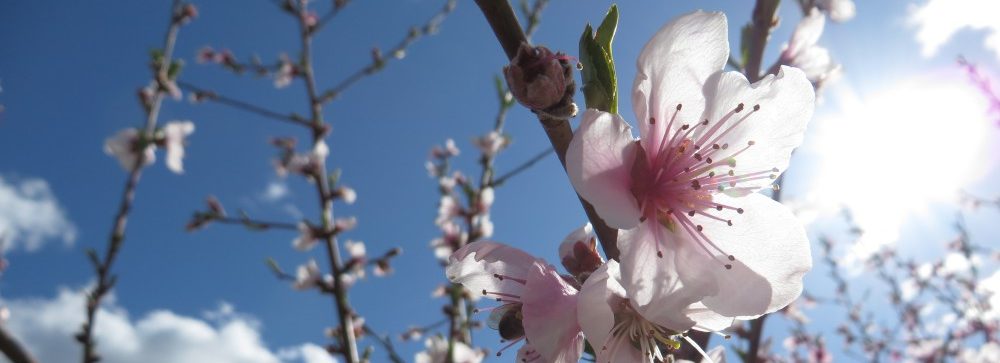For well over 100 years, orchardists and researchers alike have been striving for ways to make orchards more productive, efficient, and profitable. And while the story doesn’t begin with England’s East Malling and Long Ashton (EMLA) Research Stations, the modern chapters of dwarf fruit tree production certainly do. The East Malling research station was established in 1913 as a way to “study the problems which are met with in the actual culture of fruit trees and bushes.” Though not limited to development of dwarf rootstocks, its establishment launched the orchard world down a path that has resulted in smaller and smaller trees, planted in increasingly higher densities, requiring greater inputs of resources, pesticides, and money. And there is no doubt these technological advancements have led to greater productivity, cosmetic fruit quality, and profitability. But at the same time they’ve gutted the heart and soul from fruit orchards, reducing overall biodiversity and forcing orchards to look and act more like monocultures than diverse fruit-bearing ecosystems.
Over the past few years, and especially with the increased interest in permaculture and hard cider, sustainably-minded growers have looked to trees grown on larger rootstocks, planted at lower densities, with diverse understories, and substantial trophic biodiversity. These types of orchards are certainly not more productive or efficient than high-density orchards when measured with a conventional yardstick. The trees are taller, they bear less fruit, and the fruit quality (from a commercial perspective) is lower – so why would anyone plant an orchard as I’ve just described?
To start, fruit quality is merely a matter of perspective. To the ‘Red Delicious’ grower in Washington state, fruit quality is all about size, color, uniformity, shipability, and high packouts. To the permaculturist and cider apple grower, fruit quality is about so much more. Cosmetics are mostly irrelevant.
More importantly, the ‘ecosystem’ orchard is about balance, health, and diversity. The trees are not pushed to ever-greater productivity with synthetic fertilizers, over-invigorating them, making them more susceptible to insects and diseases, and forcing the use of increasing amounts of pesticides. Their productivity is measured and managed much differently. Yes, the ecosystem orchard is tended to – it has to be. But it is managed with a different focus. The trees are fertilized for balanced nutrition and energy, supplementing what the trees obtain naturally. The trees are sprayed for some insects and pests, but they are also allowed to develop their own self-defense mechanisms reducing the amount of intervention required. Yes, the trees are pruned, but they are pruned to optimize basic physiological necessities like sunlight and airflow. And because they are neither over-pruned or over-fertilized, the orchardist isn’t faced with rank growth requiring extensive winter and summer pruning, creating a vicious circle of intervention.
The ecosystem orchard isn’t managed for two or three main species – apples and whatever is planted for groundcover, beating back and subduing any other plants – desirable or not – with herbicides and intensive mowing. No, the new orchard aesthetic doesn’t just encourage, it demands diversity at all trophic scales. It encourages a diverse understory of low growing plants and herbs that complement the main crop. It encourage medium and larger-sized plants, different from the crop plant, as secondary crops or for holistic purposes. It encourages a network of life below ground that is nature’s internet. And through these diverse habitats, the orchardist encourages greater plant, animal, and insect diversity. There are more birds, bats, bees, beneficial insects, soil life, and even foxes and coyotes. At some point, the orchard comes alive, exploding with life. The ecosystem orchard is the ‘new orchard aesthetic’.
Modern science [scientific progress] has largely destroyed wonder. It has given us all less time to enjoy the fruits of our labors, to bathe in the wonders of nature, drink in the fresh air, warm ourselves in the sunshine, and ponder the depths of the cosmos. Modern agricultural science has focused more and more on the statistical differences between this and that; taking away our ability to look deeply into the natural world and viscerally understand the difference between right and wrong.The point of the new orchard aesthetic is largely that it allows the orchardist to become one with what they’ve created. It allows for more time interacting with the farm and less time managing it.
I’ll never take anything away from anyone trying to make a living from farming. Nor am I attempting to demonize dwarfing rootstocks or high density orchards. They are valuable tools in growing high quality fruit for anyone trying to make a living from farming. However, the global industrial approach to farming is destroying the planet and totally missing the opportunity to right a great number of wrongs. Like politics, we can’t keep going down the same path looking for different results. The world is changing around us faster than ever before and there is little that we can do as individuals to change things. But together, we can make huge changes in how we farm, the food that we grow, the air we breathe, the water we drink. We just need to look at it from a different perspective.
